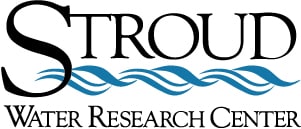
WikiWatershed is a web toolkit designed to help citizens, conservation practitioners, municipal decision-makers, researchers, educators, and students advance knowledge and stewardship of fresh water. WikiWatershed an initiative of Stroud Water Research Center, a global leader in freshwater science.
Author: Heather Brooks
12. What Are the Sources of Model My Watershed Data?
Learn the sources of Model My Watershed's animal data, enhanced Delaware River watershed data, and land coverage data.
11. How Can I Print/Download My Results?
Instructions for sharing projects, printing maps, and downloading data, shapefiles, and GeoJSON files.
10. Can I Change Between Units of Measurement?
You can set your unit preference to metric or U.S. customary units in your account settings.
9. Can I Add Citizen Science Water Quality Data to Model My Watershed?
Add your data to the Monitor My Watershed data portal and it will appear in the "Monitor" tab in Model My Watershed.
8. How Do I Import GIS-Drawn Shape Files for My Watershed Boundary?
You can drag and drop or select shapefiles or GeoJSON files and then use that study area for all analysis and modeling in Model My Watershed.
7. How Do I Save and Share a Project?
Logged in users can save and share projects and download project data to a spreadsheet.
6. How Do I Free-Draw a Polygon/Area Around My Watershed?
You can free draw a study area of any size and shape in Model My Watershed.
5. Can I Use Model My Watershed Internationally?
Model My Watershed is currently only available for the continental United States because it is built with U.S. Geological Service watershed data.
4. How Do I Find My Location in Model My Watershed?
Type an address or place name in the “Jump to location or HUC” search box located near the top right and choose your location from the suggestion list.